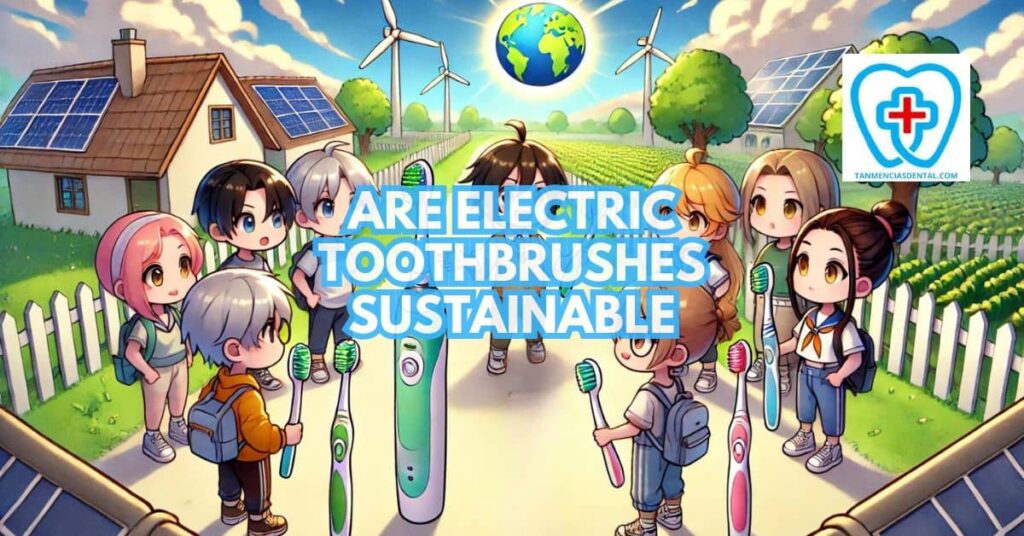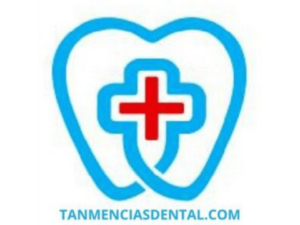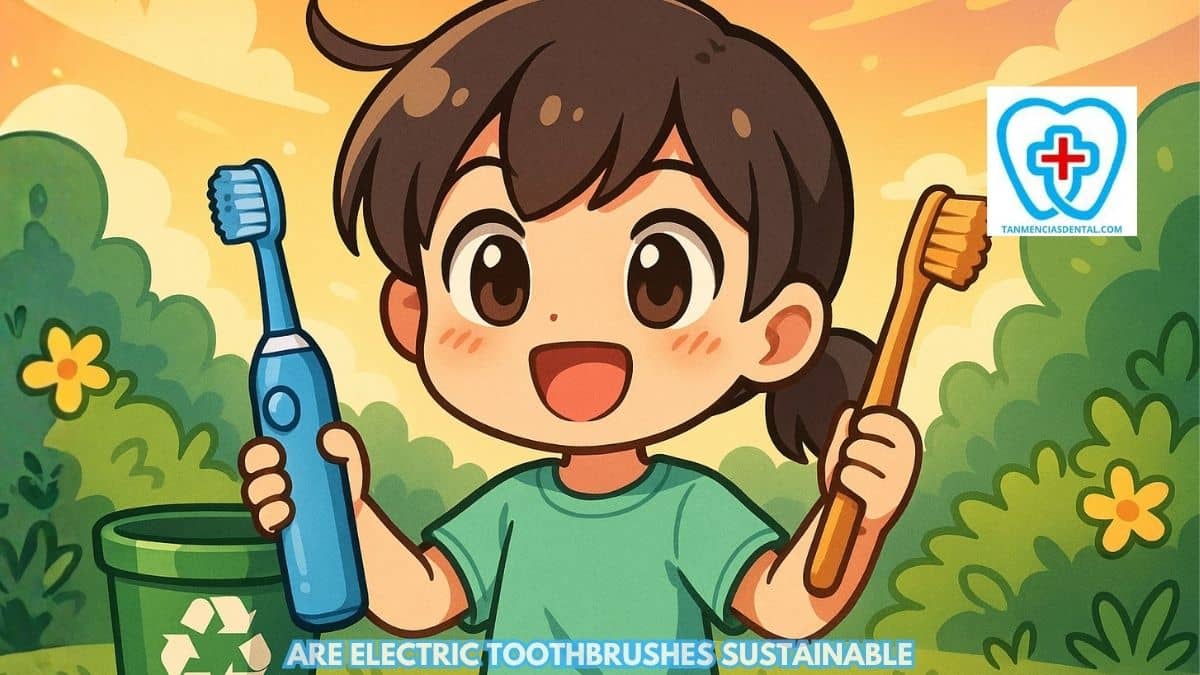Many people are beginning to wonder if are electric toothbrushes sustainable when it comes to caring for both their teeth and the planet.
Electric toothbrushes are praised for making brushing easier and more effective, but they also use energy and materials that may harm the environment.
To understand their real impact, it is important to look at how they are made, how much electricity they use, and what happens when they are thrown away.
Comparing them with manual toothbrushes helps reveal whether their benefits outweigh the environmental cost.
We’ll explore whether electric toothbrushes are truly worth the hype or if they create more problems than they solve for sustainability.
1. Electric Toothbrush Production: How Eco-Friendly Is It?
The production process of electric toothbrushes involves using plastics, metals, and electronic components, each contributing to environmental impact.
Manufacturing these materials often requires significant energy and resources, which results in pollution and greenhouse gas emissions.
The extraction and processing of raw materials, especially metals used in electronic components, can be particularly damaging to ecosystems, leading to habitat destruction and water pollution.
Some sustainable electric toothbrush brands are beginning to adopt eco-friendly production methods, such as using recycled materials or reducing energy consumption during manufacturing.
These brands aim to create an environmentally friendly electric toothbrush by focusing on sustainability throughout the production process.
Despite these efforts, the overall eco-friendliness of production remains a concern, as the majority of brands still rely on traditional manufacturing practices.
Consumers can help drive change by supporting companies that prioritize sustainability, such as those offering toothbrushes with recyclable electric toothbrush heads and biodegradable components.
🦷 Discover the Benefits of Using an Electric Toothbrush: Worth the Switch?
2. Power Consumption: Electric vs. Manual Toothbrush Showdown
Electric toothbrushes require electricity from batteries or charging stations to function, while manual toothbrushes need no external power source.
Although the energy consumption of a single electric toothbrush might seem small, it becomes significant when multiplied by millions of users worldwide.
In contrast, a plastic toothbrush does not require electricity, making it inherently more energy-efficient.
However, it is essential to consider the environmental impact of plastic waste when comparing these two options.
Some electric toothbrushes are designed with energy efficiency in mind, using advanced motors and power-saving features to minimize electricity use.
Additionally, sustainable toothbrush models are emerging, aiming to balance energy consumption with eco-friendly materials, such as rechargeable batteries and recyclable components.
Understanding the broader environmental impact involves evaluating the cumulative energy use over the lifespan of these products while considering their effectiveness in cleaning teeth and gums.
🦷 Integrating Regular Dental Checkups into Your Wellness Routine
3. Using Energy Wisely: How Charging Habits Affect Toothbrush Sustainability
The way you charge an electric toothbrush can change how much energy it uses over time.
Leaving the charger plugged in all day wastes electricity, even when the toothbrush is fully charged.
Using a power strip that can be switched off or charging the brush only once a week helps lower energy use.
Toothbrushes that connect to apps or Bluetooth may use a little extra power, so turning off those features when not needed can help.
Choosing renewable energy sources at home or charging during off-peak hours also makes brushing more environmentally friendly.
🦷 How to Eat After Brushing Teeth: Tooth-Friendly Eating
4. Electric Toothbrush Waste: A Growing Concern
Disposing of electric toothbrushes poses a significant environmental challenge due to the materials used in their construction.
Unlike manual toothbrushes, which are primarily plastic, electric toothbrushes contain electronic components and batteries, which can be hazardous if not properly disposed of.
These components often end up in landfills, where they can take years to break down and potentially release harmful substances into the environment.
Recycling options are limited, as the complexity of disassembling and recycling the electronic parts adds to the challenge.
Addressing waste issues is crucial for improving the sustainability of electric toothbrushes, and more robust recycling programs could help mitigate their environmental impact.
🦷 How to Get Plaque Off Your Teeth With Braces

5. Replaceable Heads: A Greener Option for Brushing?
Replaceable heads for electric toothbrushes are an effective way to cut down on waste because users can keep the main handle and change only the top part when the bristles wear out.
This approach greatly reduces the amount of plastic that ends up in the trash compared to replacing an entire manual toothbrush.
Well-known brands like Oral-B have introduced replacement heads that are compatible with different electric brush models, making them convenient and easy to reuse.
The SURI toothbrush also promotes sustainability by offering recyclable heads and handles designed to last longer than standard models.
However, even these replaceable heads are often made of hard plastic and nylon bristle materials that can be difficult to recycle.
Some companies are now experimenting with eco-friendly options that use plant-based plastics or biodegradable materials.
Proper disposal of old heads, such as returning them through brand recycling programs, helps limit their environmental impact.
Choosing electric toothbrushes that support these greener options is a simple way for consumers to make a positive difference.
🦷 Exploring the Benefits of Angled Toothbrushes
6. Clean Teeth, Clean Planet: Balancing Oral Health and Sustainability
Maintaining good oral health is essential, but we also need to think about how our choices affect the environment.
Many people choose an electric toothbrush because it can clean more effectively, especially when using sonic technology that moves the bristles very quickly.
Dentists often recommend sonic electric brushes for people who struggle with manual brushing, as they can help remove more plaque in less time.
However, these advanced brushes use electricity and materials that have a larger environmental impact than a simple manual toothbrush.
Some dentists suggest that with the right brushing technique and consistency, a manual brush can clean teeth just as well for most people.
Balancing the use of a sonic electric toothbrush with habits that reduce waste, such as using recyclable heads, can support both oral health and sustainability.
Making small, mindful choices in dental care helps protect your teeth and the planet at the same time.
🦷 What Makes the Best Teeth Whitening Courses Stand Out from Others?
7. Electric vs. Manual: Cost and Longevity Compared
Electric toothbrushes usually cost more at the start than a manual brush, which can make some people hesitate to buy them.
However, an electric brush often lasts for many years if it is cleaned and stored properly.
A manual brush must be replaced every few months, which adds up over time and creates more plastic waste.
When comparing both types, it is helpful to look at long-term savings rather than just the first price.
Electric brushes also need charging, so battery life plays an important role in how convenient they are to use.
Models with longer battery life can be more energy-efficient and reduce the need for frequent recharging.
Some people find that electric brushes clean better, which may save money on future dental care.
Overall, while the manual brush costs less upfront, the electric brush can be a better investment if maintained well and used for several years.
🦷 How to Reduce the Swelling After Wisdom Teeth Removal
8. Is an Electric Toothbrush Cost-Effective in the Long Run?
While electric toothbrushes come with a higher upfront cost, their long-term cost-effectiveness depends on factors such as durability, replacement frequency of brush heads, and energy consumption.
Users may save money over time by replacing brush heads instead of buying new manual toothbrushes regularly.
In addition, some models offer features like timers and pressure sensors that can contribute to improved oral hygiene, potentially reducing dental care costs.
The environmental cost savings can also be significant if consumers opt for models with rechargeable batteries and recyclable components.
Weighing these factors can help determine if the investment in an electric toothbrush is financially worthwhile.
🦷 What Is the Best Way to Brush Your Teeth with Braces?
9. Building a Sustainable Electric Toothbrush: Eco-Friendly Materials
Creating a sustainable electric toothbrush means using materials that are safe for both people and the planet.
Some companies are now testing biodegradable plastics and natural materials like bamboo to make their toothbrushes more eco-friendly.
For example, a bamboo toothbrush can inspire electric brush designs that use bamboo handles or accents to reduce plastic use.
Manufacturers are also exploring recycled metals and compostable packaging to make every part of the product more sustainable.
Choosing recyclable materials for both the brush handle and the replaceable heads helps cut down waste and pollution.
These thoughtful material choices can make electric toothbrushes cleaner for the environment while still giving users the same quality brushing experience.
🦷 What are Some Surprising Natural Ways to Treat Gingivitis?
10. Battery Power: Can We Make Electric Toothbrushes Greener?
The batteries used in electric toothbrushes are a major consideration for their environmental impact.
Rechargeable batteries are generally a more sustainable option compared to disposable ones, as they can reduce waste and energy consumption over time.
Advances in battery technology, such as the development of more efficient and longer-lasting batteries, can further enhance sustainability.
Ensuring that batteries are easily replaceable and recyclable is also essential for minimizing environmental harm.
Encouraging consumers to choose models with greener battery options can help reduce the ecological impact of electric toothbrushes.
🦷 Basic Dental Needs in Marikina
11. Disposal and Recycling: Minimizing Your Impact on the Environment
Proper disposal and recycling of electric toothbrushes are crucial steps in reducing their environmental impact.
Some manufacturers offer take-back programs to recycle old toothbrushes, ensuring that materials are reused or safely disposed of.
Consumers can also look for local recycling programs that accept electronic waste to responsibly dispose of their toothbrushes.
Raising awareness about the importance of recycling and proper disposal can help reduce the amount of waste that ends up in landfills.
The key to making electric toothbrushes a more environmentally friendly option is to promote sustainable disposal methods.
🦷 Tan-Mencias Dental Clinic for Families
👨⚕️ Conclusion
Electric toothbrushes offer notable benefits for oral health but come with environmental considerations.
Their sustainability is influenced by factors such as production methods, materials, energy use, and disposal practices.
While they can be a more sustainable option with the right features, such as replaceable heads and rechargeable batteries, they require conscious effort from both manufacturers and consumers to minimize their environmental impact.
Balancing the benefits of improved oral hygiene with ecological concerns can guide consumers in making informed choices.
Ultimately, the sustainability of electric toothbrushes depends on ongoing innovation and responsible consumption.
😊 Self-Promotion
Discover the perfect smile at Tan-Mencias Dental Clinic, conveniently located in Parang, Marikina City.
Our friendly and skilled team is dedicated to providing you with exceptional dental care in a warm and welcoming environment.
Whether you’re looking for a routine checkup or specialized treatment, we’re here to help you achieve optimal oral health.
Have questions or want to schedule an appointment?
Feel free to call us at 0917-145-1074, message us on our Facebook page, or use our website’s contact form.
We look forward to seeing you smile!
❔ FAQs
1. Are electric toothbrushes sustainable?
Electric toothbrushes can be partly sustainable if they are made with recyclable materials and have rechargeable batteries.
However, their production and disposal still create waste and use energy.
Choosing brushes with long lifespans and replaceable heads helps reduce their environmental impact.
2. What makes an electric toothbrush eco-friendly?
An eco-friendly electric toothbrush uses recyclable or biodegradable materials and has energy-efficient features.
Models with rechargeable batteries, minimal packaging, and take-back recycling programs are better for the environment.
Using them responsibly also makes a difference.
3. How can I make my electric toothbrush more sustainable?
You can make your toothbrush more sustainable by charging it only when needed and turning off unnecessary features like Bluetooth.
Use replacement heads instead of buying a new brush each time.
Recycle the old parts through manufacturer programs or electronic waste centers.
4. Are manual toothbrushes better for the environment than electric ones?
Manual toothbrushes do not need electricity and are often lighter to produce and ship.
However, they create more plastic waste since they are replaced more often.
Electric toothbrushes can be more sustainable if used for several years with minimal waste and responsible recycling.
5. What should I do with an old electric toothbrush?
Do not throw it in the trash, as it contains batteries and electronic parts.
Instead, look for local e-waste recycling programs or contact the manufacturer about take-back options.
Proper recycling keeps harmful materials out of landfills and helps recover valuable resources.

